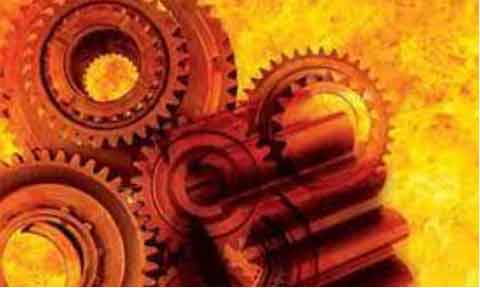Surface defects, such as overheating and burning, can occur during heat treatment processes and adversely affect the quality and performance of heat-treated components. These defects can lead to material degradation, reduced mechanical properties, and compromised surface integrity. This article explores the causes of surface defects in heat treatment and provides strategies for avoiding overheating and burning to ensure high-quality heat-treated parts.

1.Causes of Overheating and Burning:
- a) Improper Temperature Control: Inaccurate temperature measurement or control during heating can result in overheating, surpassing the desired austenitizing temperature, and causing surface defects.
- b) Excessive Soaking Time: Prolonged exposure to elevated temperatures during the soaking phase can lead to overheating and subsequent burning of the material surface.
- c) Oxidation: Inadequate protection or excessive exposure to oxygen during heating can cause surface oxidation, leading to scale formation and potential burning.
2.Strategies for Avoiding Overheating and Burning:
- a) Temperature Control: Ensure precise temperature control using calibrated instruments and monitoring systems to prevent overheating. Implement appropriate ramp rates and soaking times based on the material and heat treatment specifications.
- b) Protective Atmosphere: Utilize appropriate protective atmospheres, such as controlled atmospheres, inert gases (e.g., nitrogen), or reducing gases (e.g., hydrogen), to minimize oxidation and scale formation on the material surface.
- c) Proper Part Placement: Arrange parts in the furnace or on fixtures to allow adequate airflow and heat distribution, preventing localized overheating and burning.
- d) Quenching Techniques: Optimize quenching parameters, such as quenching media selection, agitation, and cooling rates, to prevent overheating of the material surface during the quenching process.
- e) Surface Cleaning: Thoroughly clean the part surface before heat treatment to remove contaminants and foreign materials that could contribute to surface defects.
- f) Protective Coatings: Apply suitable protective coatings or anti-oxidation compounds on the material surface to minimize oxidation and scale formation during heating.
- g) Heat Treatment Equipment Maintenance: Regularly inspect and maintain heat treatment equipment, including heating elements, thermocouples, and furnace insulation, to ensure proper functioning and accurate temperature control.
3.Monitoring and Quality Control:
- a) Process Monitoring: Implement real-time process monitoring systems to track and record temperature profiles, heating and cooling rates, and other relevant parameters to identify potential deviations and prevent overheating.
- b) Non-Destructive Testing: Employ non-destructive testing techniques, such as visual inspection, surface roughness measurements, and ultrasonic testing, to detect surface defects and assess the quality of heat-treated parts.
- c) Quality Control Procedures: Establish robust quality control procedures to verify compliance with heat treatment specifications, including surface quality requirements, and promptly address any deviations or non-conformities.
4.Operator Training and Process Documentation:
- a) Operator Training: Provide comprehensive training to heat treatment personnel regarding proper temperature control, understanding heat treatment specifications, and recognizing signs of overheating or burning.
- b) Process Documentation: Maintain accurate records of heat treatment parameters, equipment calibration, and any deviations or incidents related to surface defects. This documentation facilitates process analysis, troubleshooting, and continuous improvement efforts.
Avoiding surface defects, such as overheating and burning, is essential for achieving high-quality heat-treated components. By implementing strategies for precise temperature control, using protective atmospheres, optimizing quenching techniques, and maintaining equipment, manufacturers can minimize the risk of surface defects and ensure the integrity of heat-treated parts. Continuous monitoring, quality control procedures, and operator training contribute to the successful prevention of surface defects in heat treatment processes.
